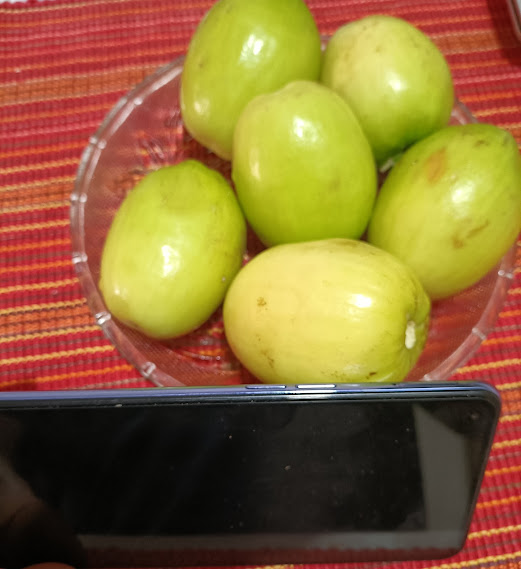INDIAN JUJUBE
LT COL NOEL ELLIS
13/II/2024
As I attended to the garden in the morning our vegetable vendor gave a call. “Madam ji ber le lo, sev ke barabar”. Mam please buy some ber as big as an apple. He called it ‘Sev Ber’. My wife asked me if I would like to try them. It was an affirmative from me.
All of us have got our hands on ‘Ber’ in our childhood. What fun it used to be collecting them from under the bushes. Small roundels, ranging from green, to yellow, to dark brown. The darker the shades the riper they would be.
The ber bush could be as high as your knee. At places it would be as big as a tree. The only hitch used to be its thorns. It was an ideal place for birds to nest and frolic. For us kids, who were on a look out for anything to eat, there could be no better fruit to find. Most of the shrubs would be laden with fruit when in season.
A stone, a faggot, even your own PT shoe was thrown at the bush. In case one could walk to its base without getting pricked by a thorn, followed by a vigorous shake would loosen the ripe fruit from its branches. The sound of their fall on the ground like pitter-patter still reverberates in my mind.
Then the attack would begin. A competition of kinds, to pick up as many as we could. It was good fun gathering them and filling the pockets of your shorts. A few bruises did not matter. Once we returned back home, Ber could be bartered for marbles, or even taking the first chance in Gulli Danda or Pithoo. Just ten marble sized fruits could get you that privilege.
Today, I was quite surprised to see the quality and size of Bers. They are half the length of a mobile phone and almost half the size of an apple. Giant ber of sorts.
The name for this fruit is ‘Indian Jujube’ or ‘Indian Plum’ as per Google. In the local lingo it is called ‘Bor’. Bor is supposed to be a low-calorie fruit loaded with dietary fibre, vitamins, and minerals. It is a fantastic source of Vitamin C and a potent antioxidant. My-my, all these years we just consumed them without all this knowledge.
Mom would shout at the top of her voice, Dho ke khana, keeda dekh kar khana, ziada mat khana, kha ke pani mat peena-khansi ho jayegi”. Who cared!
Some of the over ripe and sweet ones used to have a pungent smell and sweeter taste. In the desert, the wild bers are dried and sold for human consumption. Dry ones they say are rich in calcium and phosphorus. Dry ber is also used for wound healing, skin rejuvenation, promoting digestion and even eaten for weight loss. Some say that this fruit is used for cancer treatment. In villages, ber forms part of the cattle diet. Goats and camels just love the fruit as well as its leaves. Birds like Bulbuls and Sand groves relish them too.
In the good old days when barbed wire fencing was uncommon or unaffordable, people would chop and dry ber bushes and pile them up along their boundaries. Even small cattle pens were surrounded by these thorny bushes in the desert, especially where baby goats and sheep were kept.
Ber is ‘in season’ in our city. One finds hand carts neatly piled with this fruit. It is really a poor man's apple, as it is quite cheap. Above all it is tasty, fragrant, and sweet.
There are great institutions in the Sun City called the Central Arid Zone Research Institute (CAZRI) and Arid Forest Research Institute (AFRI). As the name suggests they research on plants etc found in the arid and semi arid zones, besides other mandates given to them. The most significant are the ‘Cazri Ber’ and that is what I ate today.
This ‘big ber’ has evolved from research done on this fruit, Besides the institutes have also developed pomegranate & other fruits & grains. How soon can I visit them to find out more? I wonder!!!!!!!
JAI HIND
© ® NOEL ELLIS


Comments
Post a Comment